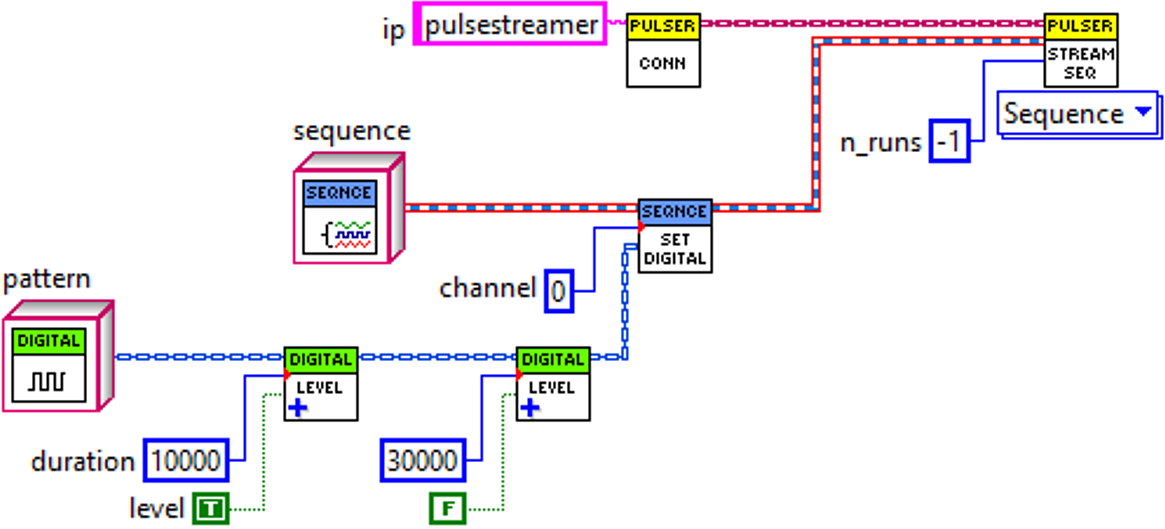Getting Started¶
Software installation¶
The Pulse Streamer does not require any driver installation. It uses standard Ethernet interface for communication, so all drivers are provided with your operating system. The only requirement is that the Pulse Streamer can be added to your network, see the Network Connection section for further information. Additionally, the direct connection to the network card of your PC supported as well.
Client software¶
Please visit the Software Downloads section of our web-site and download the client and example files for any of the supported programming languages.
MATLAB toolbox can be manually installed with MATLAB Add-on Manager by double-clicking the toolbox package file (Windows). The toolbox is compatible with MATLAB versions starting from 2014b.
LabVIEW package installation requires free JKI VI Package Manager which is often installed alongside with LabView.
Python module for Pulse Streamer can be installed either from the www.pypi.org with the following command
pip install pulsestreamer
or from a local package file using the command
pip install path/to/packagefile.whl
Replace path/to/packagefile.whl with actual path of the package file.
Generate simple pulse pattern¶
This section shows simple example on how to generate a simple signal on digital output “0” of the Pulse Streamer. The signal will consist of a single pulse which is repeated infinite number of times. While this example is extremely simple, yet it shows very typical way of defining and generating various signals.
# import API classes into the current namespace
from pulsestreamer import PulseStreamer, Sequence
# A pulse with 10µs HIGH and 30µs LOW levels
pattern = [(10000, 1), (30000, 0)]
# Connect to Pulse Streamer
ip = 'pulsestreamer'
ps = PulseStreamer(ip)
# Create a sequence object
sequence = ps.createSequence()
# Create sequence and assign pattern to digital channel 0
sequence.setDigital(0, pattern)
# Stream the sequence and repeat it indefinitely
n_runs = PulseStreamer.REPEAT_INFINITELY
ps.stream(sequence, n_runs)
% import API classes into the current namespace
import PulseStreamer.*
% A pulse with 10µs HIGH and 30µs LOW levels
pattern = {10000, 1; 30000, 0};
% Connect to Pulse Streamer
ip = 'pulsestreamer';
ps = PulseStreamer(ip);
% Create a sequence object
sequence = ps.createSequence();
% Assign pulse pattern to digital channel 0
sequence.setDigital(0, pattern);
% Stream the sequence and repeat it indefinitely
n_runs = PulseStreamer.REPEAT_INFINITELY; % endless streaming
ps.stream(sequence, n_runs);
Detailed information about the programming interface of the Pulse Streamer and the API can be found in the Programming interface section.
